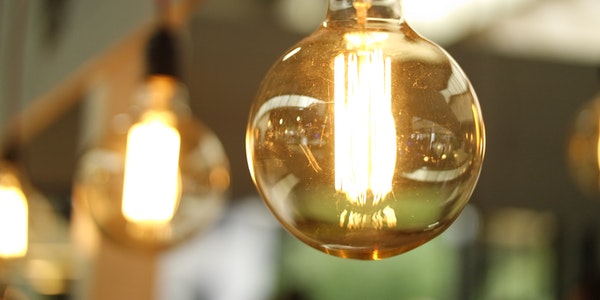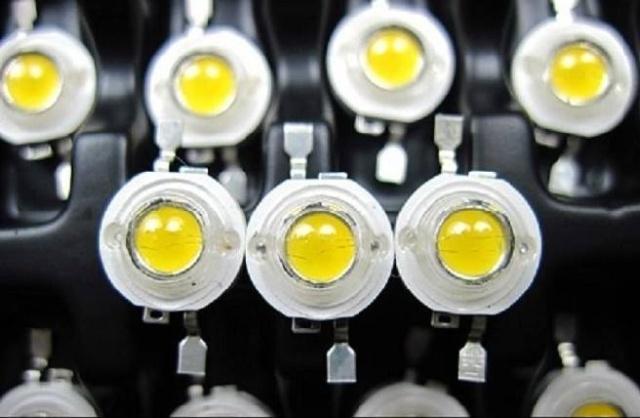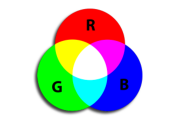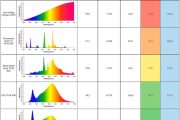Some Basic Concepts about Optics
- Light and electromagnetic waves:
Light is an electromagnetic wave, the speed is: 30×10000 km/s
The wavelength is 780~380nm (nanometer). 1 nanometer = 10 to the -9th square meter
- Spectrum and color:
Spectrum: red, orange, yellow, green, blue, indigo, purple
Infrared wavelength: 620~780nm. The wavelength of ultraviolet light: 380~420nm. As shown below:
Wavelength 780~620~590~560~490~450~420~380nm
Sunlight: The wavelength is 780~380nm, pure white.
Incandescent lamp: The wavelength is 780~400nm, lack of violet light, so the light color after synthesis is slightly reddish yellow.
Fluorescent lamp: The wavelength is 750~310nm, lacks red light, so it is slightly blue or blue-white after synthesis.
- The main function of lamps:
- Fix and protect the lights;
- Control and distribute lights, highlight the required light distribution;
- Decoration and beautification of the environment;
- Light characteristics of lighting fixtures: The light characteristics of lighting fixtures are mainly explained by three technical data, namely:
- Spatial distribution of luminous intensity;
- Lamp efficiency;
- Brightness distribution or shading angle of lamps;
- Spatial distribution of luminous intensity
The luminous intensity of any luminaire is different in all directions in space. We can use data or graphics to record the distribution of the luminous intensity of the luminaire in space. Usually we use the ordinate to represent the luminous intensity distribution of the luminaire, and the origin of the coordinate As the center, the luminous intensity in each direction is marked with a vector, and the endpoints of the vector are connected to form a light intensity distribution curve, also called a light distribution curve.
Because the shape of most lamps is an axisymmetric rotating body, the distribution of luminous intensity in space is also axisymmetric. Therefore, it is enough to take any plane through the axis of the lamp and use the light intensity distribution curve in this plane to show the distribution of the lamp in the entire space.
If the spatial distribution of the luminous intensity of the lighting fixture is asymmetric, such as a long-strip fluorescent lamp, the light intensity distribution curves of several photometric planes need to be used to illustrate the spatial light distribution. Take the plane perpendicular to the long axis of the luminaire and passing through the sag line of the luminaire center as the C0 plane, and the plane perpendicular to the C0 plane and passing through the sag line of the luminaire center as the C90 plane. At least the light intensity distribution of the two planes C0 and C90 should be used to illustrate the spatial light distribution of asymmetric lamps.
In order to facilitate the comparison of the light distribution characteristics of various lighting fixtures, it is uniformly stipulated that an imaginary light source with a luminous flux of 1000 lumens (lm) is used to provide light intensity distribution data. Therefore, the actual luminous intensity should be the luminous intensity value provided by the photometric data multiplied by the ratio of the actual luminous flux of the light source to 1000.
The light intensity distribution of lighting fixtures is realized by using reflectors, translucent prisms, grids or diffusers of the fixtures to control the light. The reflector is the basic light control part of the lamp. The higher its reflectance, the stronger the regular reflection and the more obvious the light control ability.
Anodized or polished aluminum oxide and stainless steel plates are commonly used mirror-emitting materials. According to the law of regular reflection, the geometric shape and size of the aluminum reflector are carefully designed. When installing, pay attention to the precise positioning of the light source to obtain various required light distributions.
The grille mainly plays the role of shielding the light source and reducing direct glare. The light distribution through the grid is generally narrow.
Illumination and spatial luminous intensity distribution
The layout of lighting fixtures and the calculation of illuminance are an important part of lighting design, which directly affects the quality of lighting design. Point light source illuminance calculation:
Where: E: illuminance
ΔS: Light-receiving area
F: luminous flux
IQ: Luminous intensity
The formula shows that the illuminance produced by a point light source is inversely proportional to the square of the distance from the illuminated surface, proportional to the cosine of the incident angle, and proportional to the intensity of the reflection. When the size of the light source is less than 1/10 of the distance from the illuminated surface, it is regarded as a point light source.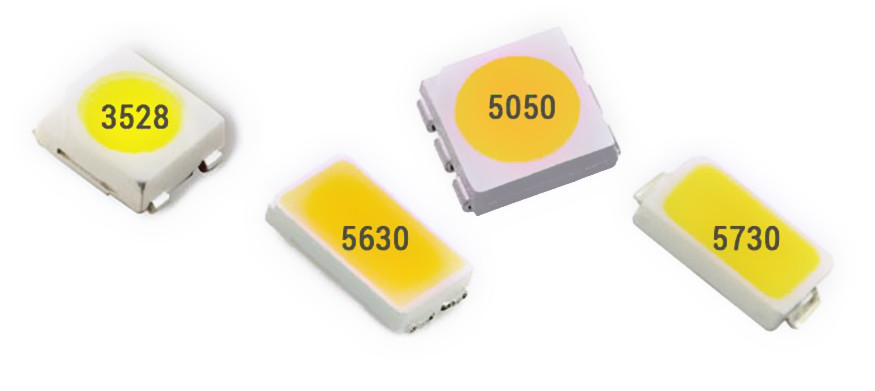
Estimation of lamps and lanterns
The luminaire budget diagram expresses the relationship between the number of luminaires used per unit area. Usually the luminaire budget chart provides several different suspension heights for the same luminaire. When the illumination requirement of the working surface is 100Ix, the number of luminaires required for a certain plane area is used as the basis for selecting luminaires. If the illuminance of the correct working surface is not 100Ix, the actual number of lamps required is the number given on the budgetary estimate multiplied by the ratio of the actual illuminance to 100Ix.
- Explanation of terms:
- Luminous flux:
The energy emitted by a light source per unit of time into space that makes people feel light. Assuming that the total light energy radiated by the light source in t seconds is W, we call the ratio of the radiated light energy W to the elapsed time t of the radiation as the luminous flux. Luminous flux is an indicator of how much the light source emits. Expressed by F, the unit is light watts. The luminous watt unit is too large. Lumen (lm) is commonly used as a practical unit. Their relationship is 1 luminous watt = 683 lumens (lm). 1lm=1cd·sr
Example: The luminous flux of an ordinary 40W fluorescent lamp is 2200 lumens (100 hours)
The luminous flux produced by incandescent lamps for every 1W of electric energy is about 12.5lm (4tlm)
- light intensity:
It is the spatial density of luminous flux, that is, the luminous flux per unit solid angle, which is a measure of the intensity of the light source. The unit is candela (cd).
The luminous intensity of a candle is about 1cd.
- Illumination (abbreviated as illuminance):
It is the surface density of the luminous flux on the light-receiving surface, that is, the luminous flux per unit area. Therefore, the illuminance is a quantity that indicates the degree to which the light-receiving surface is illuminated. Expressed by E, the unit is Lux (Lx).
Example: The illuminance of natural light is approximately as follows:
100000Lx – under direct sunlight on a sunny day
10000Lx – in the shade on sunny days
20 Lx – indoor corner on sunny days
0.2 Lx – Moonlit night
100~200 Lx – Illumination required by general office
The illuminance for general learning should not be less than 75Lx
The illuminance at 1m directly below the 40W ordinary bulb is about 30Lx
The illuminance at 1.3m directly below the 40W fluorescent lamp is about 90Lx
- brightness:
The light intensity density of the unit surface in a certain direction is equal to the ratio of the luminous intensity in that direction to the projected area of this surface in that direction. That is, the luminous intensity of the viewed object on the unit projection surface of the line of sight is called the brightness of the object’s surface. Brightness often indicates the brightness in a certain direction. Expressed by B, unit: candela per square meter, symbol: cd/㎡. Or nits (nt), sb. 1nt nits=1cd/㎡, 1sb=10000nt nits. The formula is as follows:
The surface illumination of 40W fluorescent lamp is 7000 cd/㎡
The filament brightness of an incandescent lamp is about 400×104
The brightness of the sun is about 20×108 cd/㎡
Generally, the average brightness of cloudy sky is 2000 cd/㎡
- Light effect: The luminous efficiency of the light source is the ratio of the luminous flux generated by the light source to the electric power consumed by it, referred to as light effect. Unit: lumens/watt, symbol: lm/W
The luminous efficiency of general incandescent bulbs is about 7~20 lm/W
The luminous efficiency of the straight tube fluorescent lamp is about 30-60 lm/W, so the use of fluorescent lamps can save energy more than the use of incandescent lamps.
Light color and distortion
Light color is an important indicator to measure the quality of light sources. Contains:
- Color table: The color that the human eye sees by directly observing the generated light.
- Color rendering: the objective effect produced by light shining on the surface of an object.
- Color rendering index: the value of the color displayed under the light compared with the color under the sun.
- Color temperature: refers to the color of hot and luminous objects.
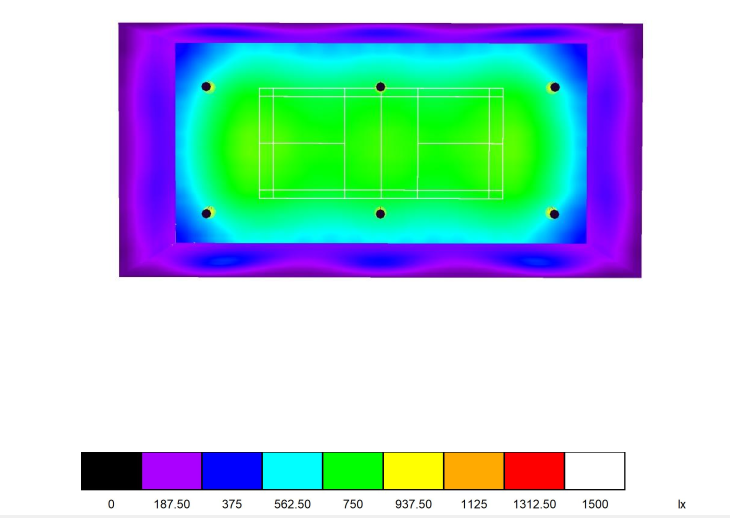
Scientific and reasonable lighting
- Brightness contrast
When the surrounding brightness is equal to the center brightness, or when the surrounding is slightly dark, vision is best.
- Glare
In the visual environment, if there are objects with extremely high brightness or strong brightness.
There are direct glare and reflected glare.
Direct glare is caused by the light emitted by the light source directly hitting the human eye. The causes of visual discomfort caused by glare are:
① The high degree of stimulation causes the pupils to shrink;
② Due to light scattering from the cornea or lens and other intraocular tissues, a light curtain is formed in the eye;
③ The visual screen is stimulated by high brightness, which destroys the adaptive state.
The intensity of direct glare is related to the light source. The glare is most prominent in the following situations:
① The dark around the light source, the darker the eyes adapt, the more prominent the glare.
② The higher the brightness of the light source, the more obvious the glare.
③ The closer the light source is to the line of sight, the more prominent the glare.
④ The larger the surface area of the light source, the more the number of light sources, the more prominent the glare.
Generally, uncomfortable glare will occur if the brightness exceeds 160000cd/㎡. Avoid method:
Control the light projection direction of the light source so that the light source cannot be directly directed to human eyes, which requires the lamp (or lampshade) to have a certain protective angle.
Some lamps use a transparent grid type or a semi-transparent cover to cover the light source. As the light-emitting area increases and the brightness of each light is reduced, the light becomes soft and not dazzling.

